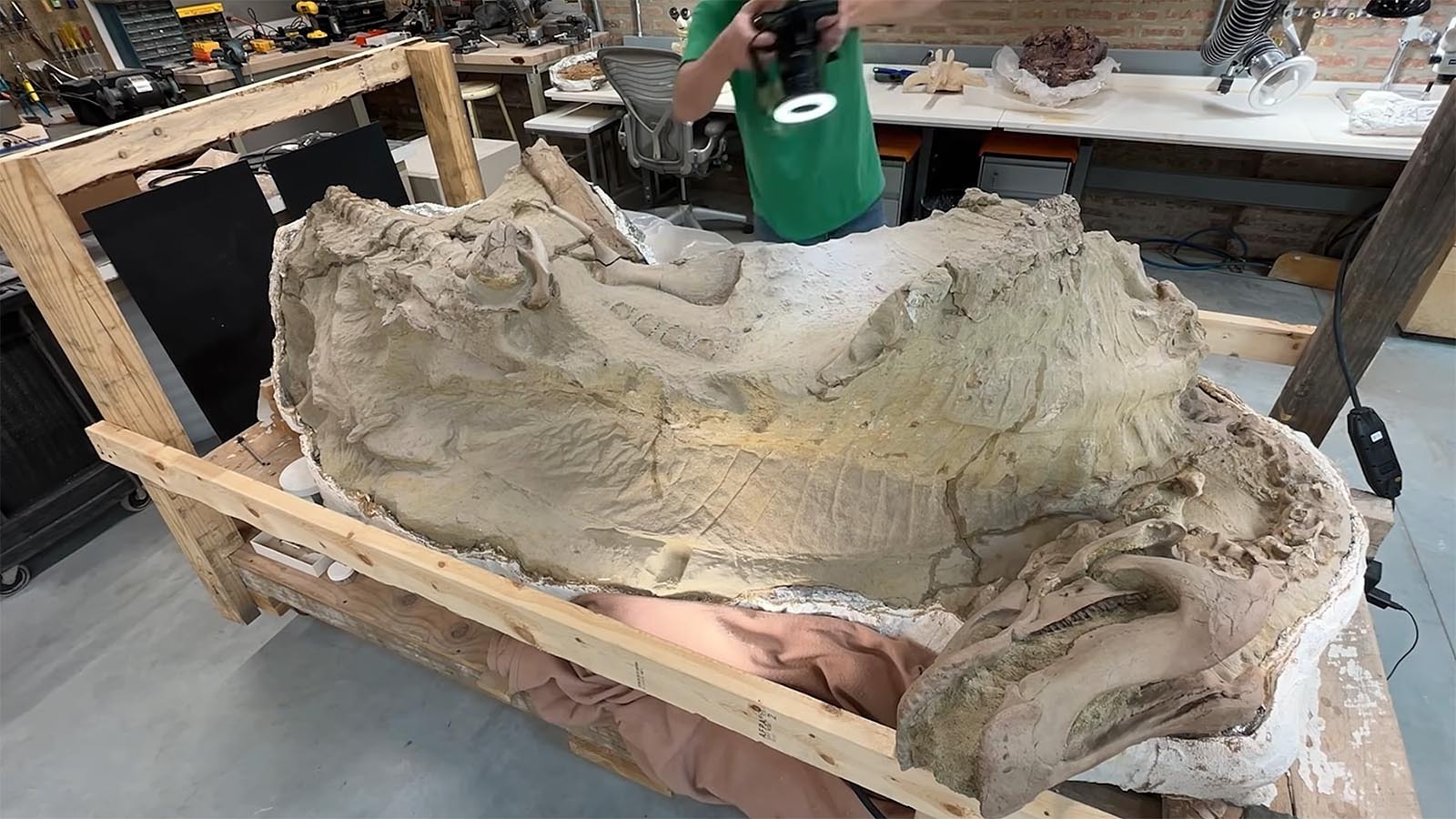The creature, named Newtonsaurus cambrensis, lived over 200 million years ago and likely ranked among the largest predators of its time. The fossil had sat untouched in a museum since 1899, but modern imaging has finally brought it into focus. Using 3D reconstruction techniques, researchers revealed that the specimen belonged to an entirely new genus of carnivorous dinosaur—predating some of the earliest known predators in its class.
Discovered near Cardiff, the fossil was originally described as a possible dinosaur jaw but was left largely unexamined for decades due to the lack of bone material. What remained were only rock impressions—imprints of the inside and outside of the jawbone, complete with 16 teeth and visible tooth sockets. This apparent lack of substance delayed any detailed analysis for over 100 years.
Recent advances in photogrammetry, a digital modelling technique, allowed scientists to produce a full 3D model from the fossil’s rock moulds. This method avoided physical contact with the delicate relic and captured details such as nerve canals and serrated tooth edges that would have been impossible to study otherwise.
Rediscovering a Long-Lost Predator
The new analysis revealed that the fossil did not match any known species, prompting researchers to propose a new name: Newtonsaurus cambrensis. The genus honors Edwin Tulley Newton, who first studied the specimen in 1899. Based on jaw size and tooth morphology, the dinosaur was likely between 5 and 7 meters in length. That places it among the larger carnivores of the Late Triassic, when most meat-eaters were relatively modest in size, rarely exceeding 3 meters.
According to The Independent, the specimen predates Dilophosaurus—a similarly structured predator from the early Jurassic—by about 10 million years. The resemblance between the two suggests a shared evolutionary trajectory, but Newtonsaurus cambrensis stands out for its earlier appearance and potential ecological dominance.
The fossil’s origin near Penarth in South Wales adds further significance. The area’s Triassic rock beds have long been known for their rich fossil content, but this discovery suggests that the region once hosted apex predators far earlier than previously assumed.


Cutting-Edge Methods Behind the Discovery
The breakthrough came from the use of non-invasive 3D imaging, specifically photogrammetry, which involves stitching together multiple high-resolution photographs to build a manipulable digital model. This approach not only preserved the fragile fossil but also enabled detailed anatomical studies without the need for casting or excavation.
This model allowed researchers to examine key internal structures, such as blood vessel canals and the serrations on the teeth—vital indicators of a carnivorous diet. Michael J. Benton, professor of vertebrate paleontology at the University of Bristol, highlighted how this technique opens doors for studying other overlooked specimens. “The method caused no damage to the unique fossil specimen and can be shared with other scientists for further examination,” he noted.
Unlike traditional methods, which risk damaging rare finds, these digital techniques provide safe, scalable, and shareable models. That means future discoveries may already be sitting in museum drawers, awaiting reexamination with today’s tools.


More than Just a Dinosaur: A New Era of Digital Paleontology
The rediscovery of Newtonsaurus cambrensis is part of a broader movement in virtual paleontology, where CT scans and synchrotron imaging are reshaping how ancient life is studied. Alongside the South Wales discovery, the same research group investigated a much smaller fossil—a 243-million-year-old reptile from Devon, just a centimeter long.
That study, published in Science Direct, used micro-CT and synchrotron scanning in Grenoble to reconstruct even the tiniest structures, revealing an insect-eating creature named Agriodontosaurus. While tiny in size, the find demonstrates how powerful scanning techniques can yield insights even from microscopic fossils.
Digital models are also used in functional analysis. For example, simulations of Tyrannosaurus rex jaw mechanics have shown that it could deliver bite forces of up to 50,000 Newtons, equivalent to 5 tonnes. The ability to model such forces helps scientists better understand predator-prey dynamics and biomechanical evolution.
Source link


